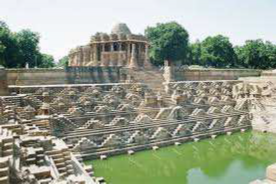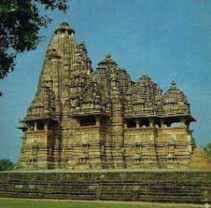C. Solanki School

The Chalukya (Solanki) kings of Gujarat patronized this school of architecture that flourished from the 11th to 13th century. The Vimala, Tejpala and Vastupala temples at Mount Abu exhibit this style. The most outstanding feature of this style is its minute and lovely decorativeness.
The Sun temple at Modhera dates back to earlyeleventh century and was built by Raja
Bhimdev-Iof the Solanki Dynasty in 1026. The Solankis werea branch of the later Chalukyas. There is amassive rectangular stepped tank

Kandariya Mahadev
Modhera Sun Temple
called the suryakund in front of it. Proximity of sacred architectureto a water body such as a tank, a river or a pondhas been noticed right from the earliest times.By the early eleventh century they had become apart of many temples. This hundred-square-metrerectangular pond is perhaps the grandest temple tank inIndia. A hundred and eight miniature shrines are carvedin between the steps inside the tank. A huge ornamentalarch-torana leads one to the sabha mandapa (the assemblyhall) which is open on all sides, as was the fashion of thetimes in western and central Indian temples. The influence of the woodcarving tradition of Gujarat isevident in the lavish carving and sculpture work. However,the walls of the central small shrine are devoid of carvingand are left plain as the temple faces the east and, everyyear, at the time of the equinoxes, the sun shines directlyinto this central shrine.
